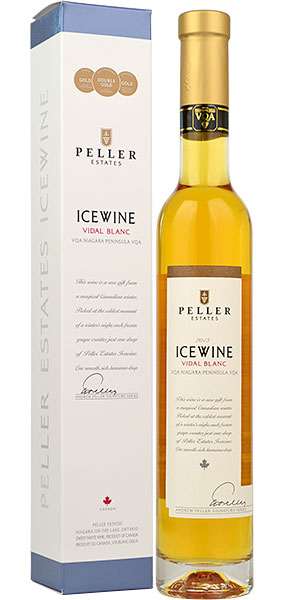
In addition to utilizing a different type of yeast, ice wine fermentation is a marathon process. Since that juice has such a high ratio of sugar to water, fermentation is a challenge.“There’s so much sugar, we have to get highly specialized yeast,” says Kaiser.“It’s super active, it almost digs through the sugar.” She explains that Reif Estate Winery utilizes specialized “super high pressure” screw presses for their ice wines.“They are specifically used for ice wine and put a lot more pressure on the grapes-that’s the only way you can push out the highly concentrated juice.” “If you’re using the correct process, you’re only getting one drop of juice per grape,” says Kaiser. Since most of the water in the grapes has formed ice crystals, a concentrated, high-sugar content juice remains. Once the frozen grapes have been harvested, it’s time to laboriously press out their juices. A lot of the work involves actually being on your knees, shaking the grapes off, getting them off the ground.It’s a very labor-intensive process, all done by hand in cold conditions.” “We shake the vines, and the grapes drop into lugs on the ground. “It really doesn’t involve picking because the grapes are so frozen,” says Harris.

Larger producers such as Reif Estate Winery use mechanical methods to harvest the frozen grapes, while smaller producers like Debonne Vineyards rely on hand harvesting. (In the United States, there isn’t a temperature requirement, but the Alcohol and Tobacco Tax and Trade Bureau mandates that ice wine must be made from grapes frozen prior to harvest.)

To ensure that the temperature doesn’t rise above the regulated minimum, grapes are typically harvested in the middle of the night. In Ontario, ice wine production is regulated under the province’s Vintners Quality Alliance (VQA) Act and regulations, which mandate that grapes must be naturally frozen on the vine and harvested and pressed in a continuous process while the air temperature remains at or below -8☌ (approximately 18☏). “We prefer to pick earlier, since the fruit deteriorates over time.” “Our ice wine harvest is anywhere from December to February,” says Kaiser. As the temperature cools, the grapes go through a dehydration process, freezing, thawing, and then refreezing. The first step of ice wine production is to leave the grapes on the vines into the winter months, covered with nets to protect the fruit from birds and other wildlife. “ mimics the climate where ice wine began over in Germany.” “Here in the Midwest it’s a good match,” says Michael Harris, winemaker at Madison, Ohio’s Debonne Vineyards. Parts of the United States are conducive to ice wine production as well, including New York’s Finger Lakes region and Midwestern states such as Michigan, Ohio, Wisconsin, and Minnesota. Ice wine is also produced on a smaller scale in British Columbia, Quebec, and Nova Scotia. In Canada, the vast majority of ice wine production is in Ontario, specifically the Niagara-on-the-Lake region. That’s really changed due to climate change-now Germany and Austria struggle to produce ice wine, and Canada has become the world’s largest ice wine producer.” “Germany was one of a few countries that made ice wines on a consistent basis. “According to legend, ice wine started in Germany in the 1700s with grapes accidentally left on the vines,” says Andrea Kaiser, brand manager for Reif Estate Winery in Niagara-on-the-Lake, Ontario. It can only be produced in very specific climates: temperate enough to grow grapes (usually cold-hardy varieties like Vidal or Riesling) but with winters cold enough to ensure a consistent stretch of below-freezing temperatures. Ice wine is a very sweet dessert wine, produced from grapes that have been left on the vine to freeze and are then harvested during the winter months.


 0 kommentar(er)
0 kommentar(er)
